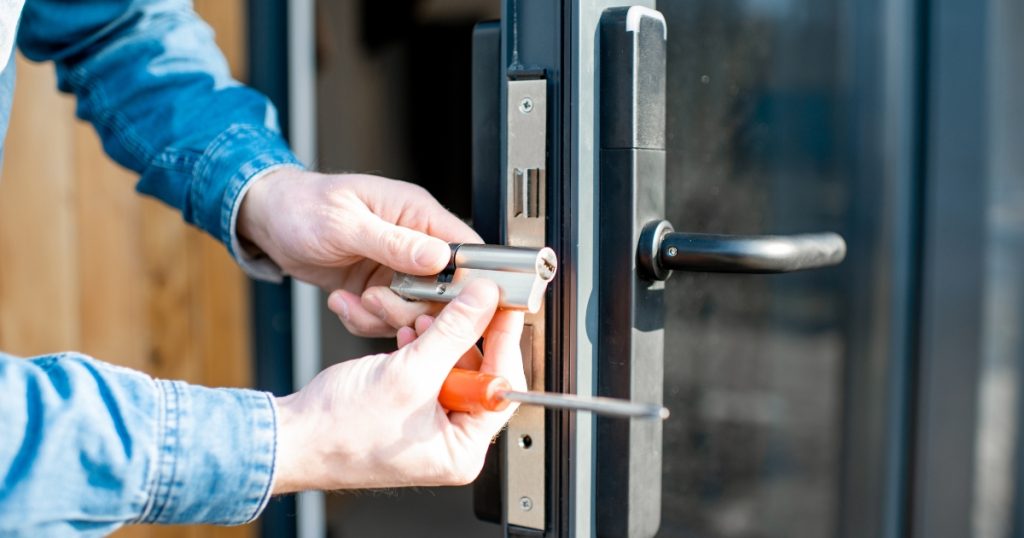Ensuring the security of your home or office is of utmost importance. One of the key components of any security system is the door lock.
Over time, these locks may need to be changed due to wear and tear or to upgrade to a more secure system.
This article will guide you through change door lock process, offering practical tips and advice to make the task as simple as possible.
Reasons for Changing Door Locks
There are various reasons why you may need to change your door locks. Some of the most common reasons include:
Security Issues
If there have been recent break-ins in your area or if you have concerns about the security of your current locks, you may want to change them. Upgrading to more secure locks can provide added peace of mind.
Lost or Stolen Keys
If your keys have been lost or stolen, it is essential to change your locks immediately to prevent unauthorized access to your property.
Moving into a New Property
When you move into a new home or office, it is always a good idea to change the locks, as previous occupants or their associates may still have keys to the property.
Damaged or Worn-Out Locks
Over time, locks can become worn or damaged, which can compromise their security. If your lock is not functioning correctly, it is important to replace it.
Upgrading to Smart Locks
Smart locks offer increased security and convenience compared to traditional locks. If you want to modernize your home or office, upgrading to a smart lock system is a great option.
Types of Door Locks
Before changing your door lock, it is important to understand the different types of locks available. Some common lock types include:
- Deadbolt Locks
Deadbolts are popular for their strength and security. They consist of a metal bolt that slides into the door frame, providing a strong barrier against forced entry.
- Mortise Locks
Mortise locks are fitted into a pocket cut into the door, making them difficult to tamper with. These locks typically feature both a deadbolt and a latch, providing an added layer of security.
- Euro Cylinder Locks
Euro cylinder locks are commonly used in Europe and feature a cylindrical keyhole. They offer a high level of security and can be easily replaced without altering the entire lock mechanism.
- Smart Locks
Smart locks offer keyless entry and can be controlled remotely using a smartphone or other connected devices. These locks often provide additional security features, such as fingerprint recognition or built-in cameras.
Door Lock Changing Process
Changing a door lock may seem intimidating, but with the right tools and a step-by-step guide, it can be a straightforward process.
Tools Required
Before starting the lock changing process, gather the following tools:
- Screwdriver (Phillips or flat-head, depending on your lock’s screws)
- Tape measure
- New door lock (compatible with your door type and security requirements)
- Optional: drill, chisel, and hammer (if modifying the door is necessary)
Step-by-Step Guide
- Remove the old lock: Unscrew and remove the old lock from the door, including the latch or bolt mechanism.
- Measure the door and lock dimensions: Use a tape measure to ensure the new lock will fit correctly in the existing door cutouts.
- Install the new latch or bolt mechanism: Insert the new latch or bolt into the door’s edge and secure it with screws.
- Install the new lock: Align the new lock with the existing cutouts in the door and secure it with screws.
- Test the lock: Ensure the lock functions correctly by inserting the key or testing the smart lock features.
Choosing the Right Door Lock
Selecting the right lock for your needs is crucial for maintaining your property’s security. Consider the following factors when choosing a new lock:
Assessing Your Security Needs
Think about the level of security you require for your property. For example, a high-security lock may be necessary for an external door, while a more basic lock may suffice for an internal door.
Understanding Lock Grades
Locks are often graded based on their strength and durability. Look for locks with a higher grade for increased security.
Brand Reputation
Choose a lock from a reputable brand with a history of producing reliable and secure products.
Hiring a Professional Locksmith
Although changing a door lock is a task that can be accomplished by most people, there are instances when hiring a professional locksmith is advisable.
Reasons to Hire a Locksmith
- Complex lock systems: If your property has a complex locking system or you’re upgrading to a smart lock, a local locksmith can ensure proper installation.
- Lack of tools or experience: If you don’t have the necessary tools or experience, hiring a residential locksmith can save you time and ensure the job is done correctly.
- Emergency situations: In cases of lockouts or lost keys, a emergency locksmith can provide fast and efficient service.
Finding a Trustworthy Locksmith
To find a reputable locksmith, ask for recommendations from friends or family, read online reviews, or consult a local trade association.
Cost of Hiring a Locksmith
The cost of hiring a locksmith varies depending on the complexity of the job, your location, and the locksmith’s experience. Obtain quotes from multiple locksmiths to ensure you’re getting a fair price.
Conclusion
Changing a door lock is an essential aspect of maintaining your property’s security.
By understanding the different types of locks, following a step-by-step guide, and choosing the right lock for your needs, you can successfully change your door lock with confidence.
In situations where the task may be more complex or you lack the necessary experience, hiring a professional locksmith is a wise decision.
Remember that your security is paramount, and investing in high-quality locks and proper installation will ensure the safety of your home or office.
Regularly assess your security needs and consider upgrading your locks when necessary to maintain a secure environment.

